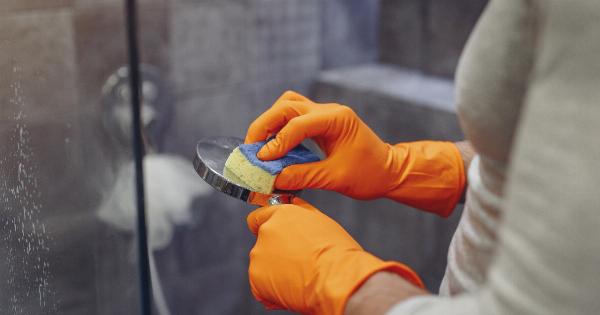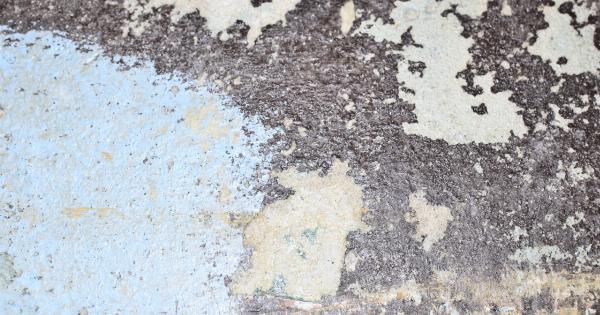Mold is a common issue in many homes and can have a significant impact on your health. It can cause various respiratory problems, allergies, and even serious lung infections.
If you suspect that your home might be infested with mold, it’s essential to take immediate action to protect yourself and your loved ones.
What is mold?
Mold is a type of fungus that grows in moist and warm environments. It thrives in areas with high humidity levels, such as bathrooms, basements, and kitchens.
Mold reproduces by releasing tiny spores into the air, which can easily be inhaled or come in contact with the skin.
How does mold affect your health?
Mold can have several negative effects on your health, depending on the extent of the exposure and your individual sensitivity. Here are some of the most common health issues caused by mold:.
Allergic reactions
Exposure to mold spores can trigger allergic reactions in some individuals. Common symptoms include sneezing, runny nose, itchy or watery eyes, coughing, and skin irritation.
These reactions are similar to seasonal allergies and can sometimes be mistaken for cold or flu symptoms.
Asthma exacerbation
If you already have asthma, mold can worsen your symptoms and trigger asthma attacks. Breathing in mold spores can irritate the airways and cause inflammation, leading to coughing, wheezing, shortness of breath, and chest tightness.
It’s crucial to minimize exposure to mold if you have asthma to prevent aggravation of your condition.
Respiratory infections
In some cases, mold exposure can lead to respiratory infections, especially in individuals with weakened immune systems. Aspergillus and other mold species can cause serious lung infections like aspergillosis, pneumonia, or bronchitis.
These infections can be particularly severe and require immediate medical attention.
Mycotoxin exposure
Some molds produce dangerous substances called mycotoxins. These toxins can be present on the surface of mold spores or within moldy materials.
Inhaling or coming into contact with mycotoxins can result in a wide range of health effects, including headaches, dizziness, fatigue, nausea, and even neurological symptoms.
How to identify mold in your home?
Identifying mold in your home can sometimes be challenging, as it can grow in hidden and hard-to-reach areas. However, there are a few signs that can indicate the presence of mold:.
- Visible mold growth: Look out for patches of mold on walls, ceilings, floors, and other surfaces. Mold can appear fuzzy, slimy, or powdery in texture and can vary in color, including black, green, brown, or white.
- Musty odor: If you notice a strong, unpleasant, and lingering musty smell in certain areas of your home, it could be a sign of hidden mold. Mold often emits a distinctive earthy or damp odor.
- Water damage: Any past or ongoing water leaks, flooding incidents, or areas with high humidity levels can create optimal conditions for mold growth. Check for signs of water damage, such as stains, bubbling or peeling paint, warped walls or floors, or visible mold growth.
- Allergic symptoms: If you or your family members experience allergy-like symptoms that seem to improve when you leave your home, it could be a sign of mold exposure.
Preventing and getting rid of mold
Preventing mold growth is the best strategy to protect your health and maintain a mold-free home. Here are some tips to prevent and eliminate mold:.
1. Control indoor humidity
Mold thrives in humid environments, so it’s essential to keep indoor humidity levels below 50%. Use air conditioners, dehumidifiers, and exhaust fans to control humidity, especially in bathrooms, kitchens, and basements.
Fix any leaks or water damage promptly.
2. Improve ventilation
Proper ventilation helps to reduce moisture levels and prevent condensation, which can contribute to mold growth. Ensure that all rooms in your home have adequate ventilation, including bathrooms, kitchens, and laundry areas.
Open windows and use exhaust fans when cooking or showering.
3. Use mold-resistant materials
When remodeling or renovating your home, choose mold-resistant materials such as drywall with mold inhibitors or mold-resistant paint. These materials can help prevent mold growth and make it easier to clean if any mold appears.
4. Keep your home clean and dry
Regularly clean and vacuum your home to remove any mold spores that may have settled on surfaces. Pay particular attention to areas prone to moisture, such as bathrooms and kitchens.
Immediately dry any wet or damp areas to prevent mold from establishing.
5. Address water leaks and moisture issues
Repair any water leaks or plumbing issues as soon as possible. Dry or remove any materials affected by water damage within 24-48 hours to prevent mold growth.
If you have a basement, consider using a waterproofing system to keep it dry and prevent moisture accumulation.
When to seek professional help
In some cases, mold problems can be extensive or difficult to handle on your own. It’s advisable to seek professional help if:.
- You’re dealing with a large-scale mold infestation covering more than 10 square feet.
- Mold is growing on or inside your walls, ceilings, or ventilation system.
- You suspect that your home’s air quality is affected by mold, but you can’t locate the source.
- You or your family members experience severe or persistent respiratory symptoms.
Conclusion
Mold growth in your home can have serious implications for your health. It’s crucial to take mold infestations seriously and address them promptly to protect yourself and your loved ones.
By preventing moisture buildup, improving ventilation, and promptly addressing any signs of mold, you can create a healthier and mold-free living environment.





























